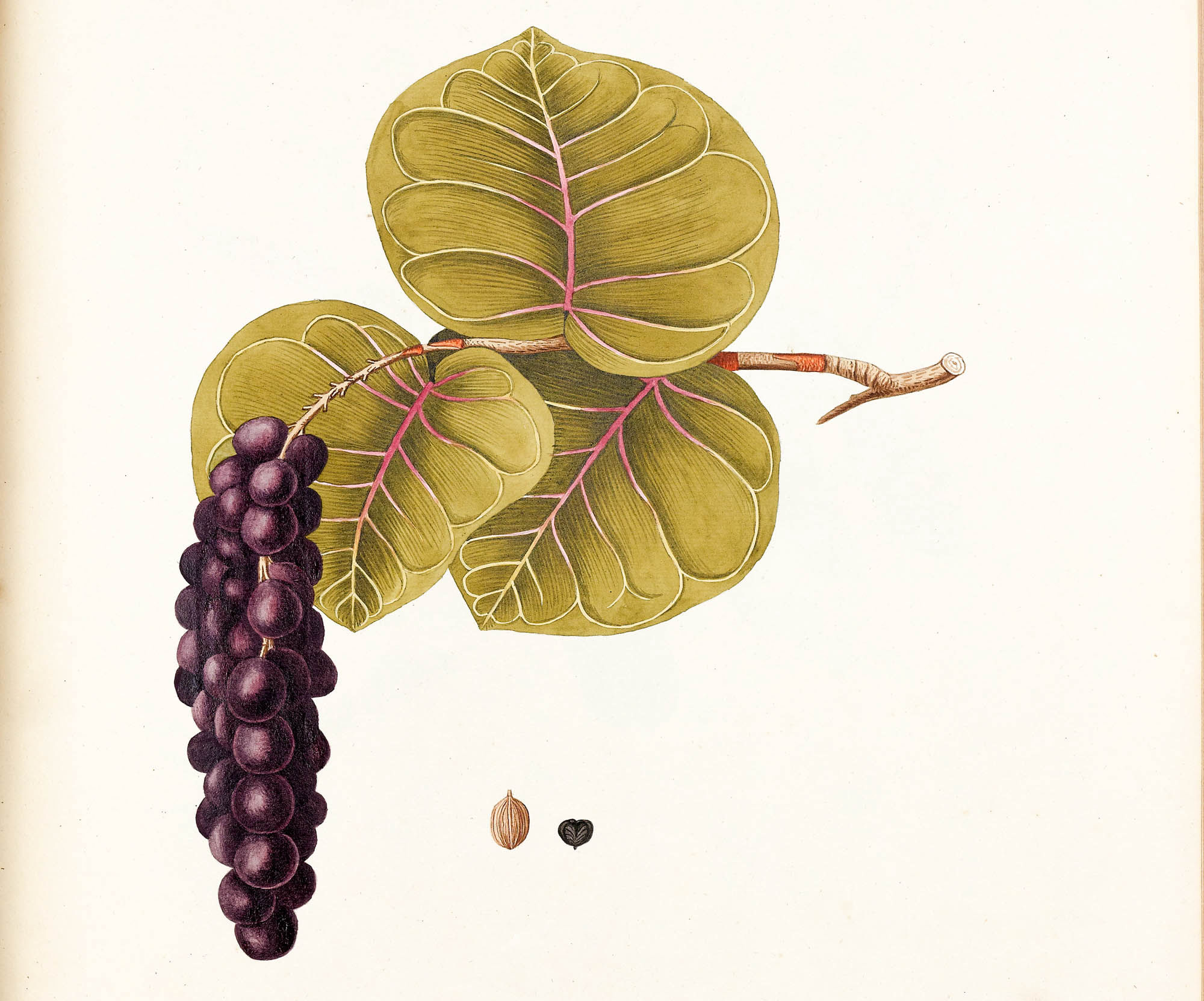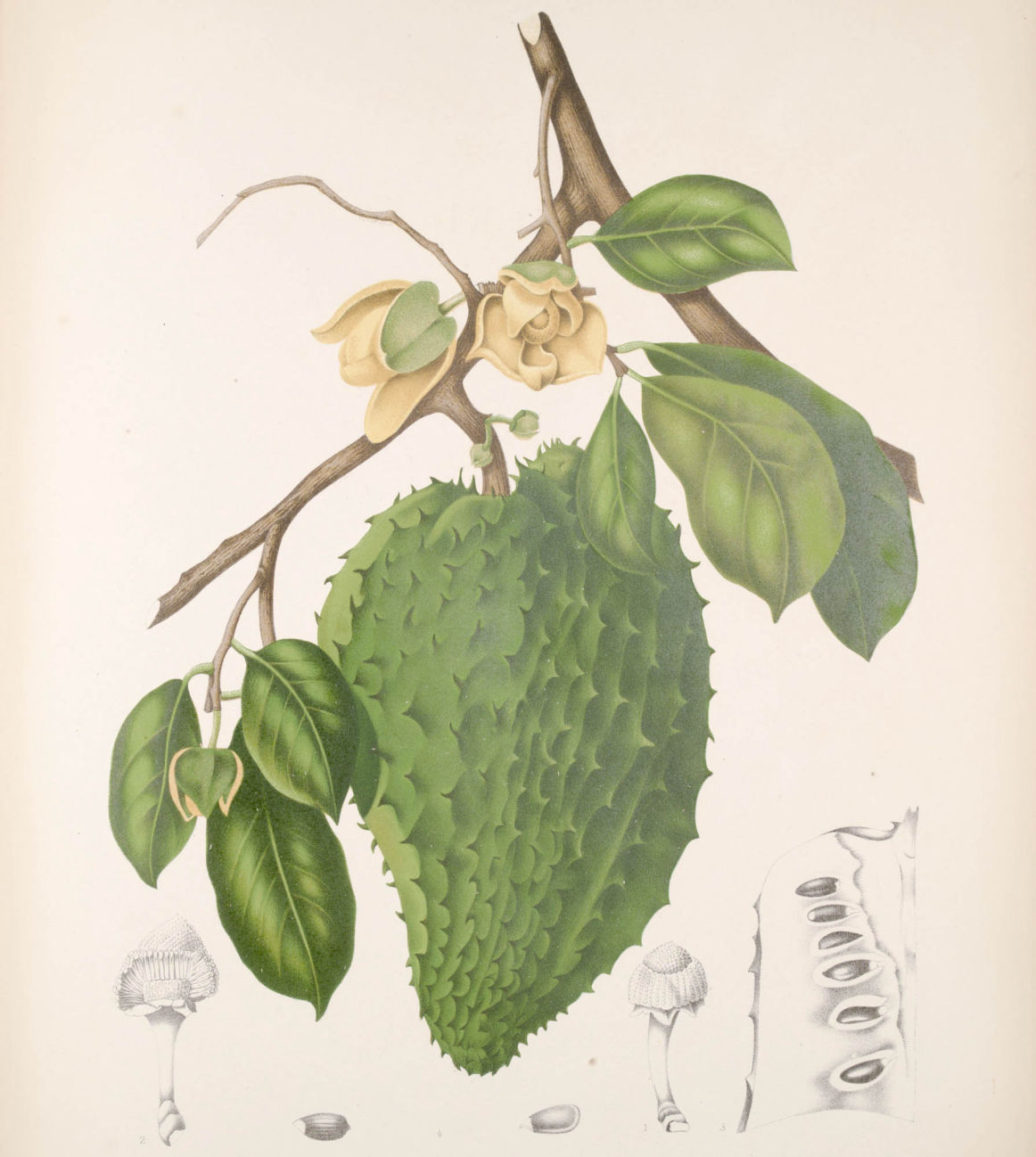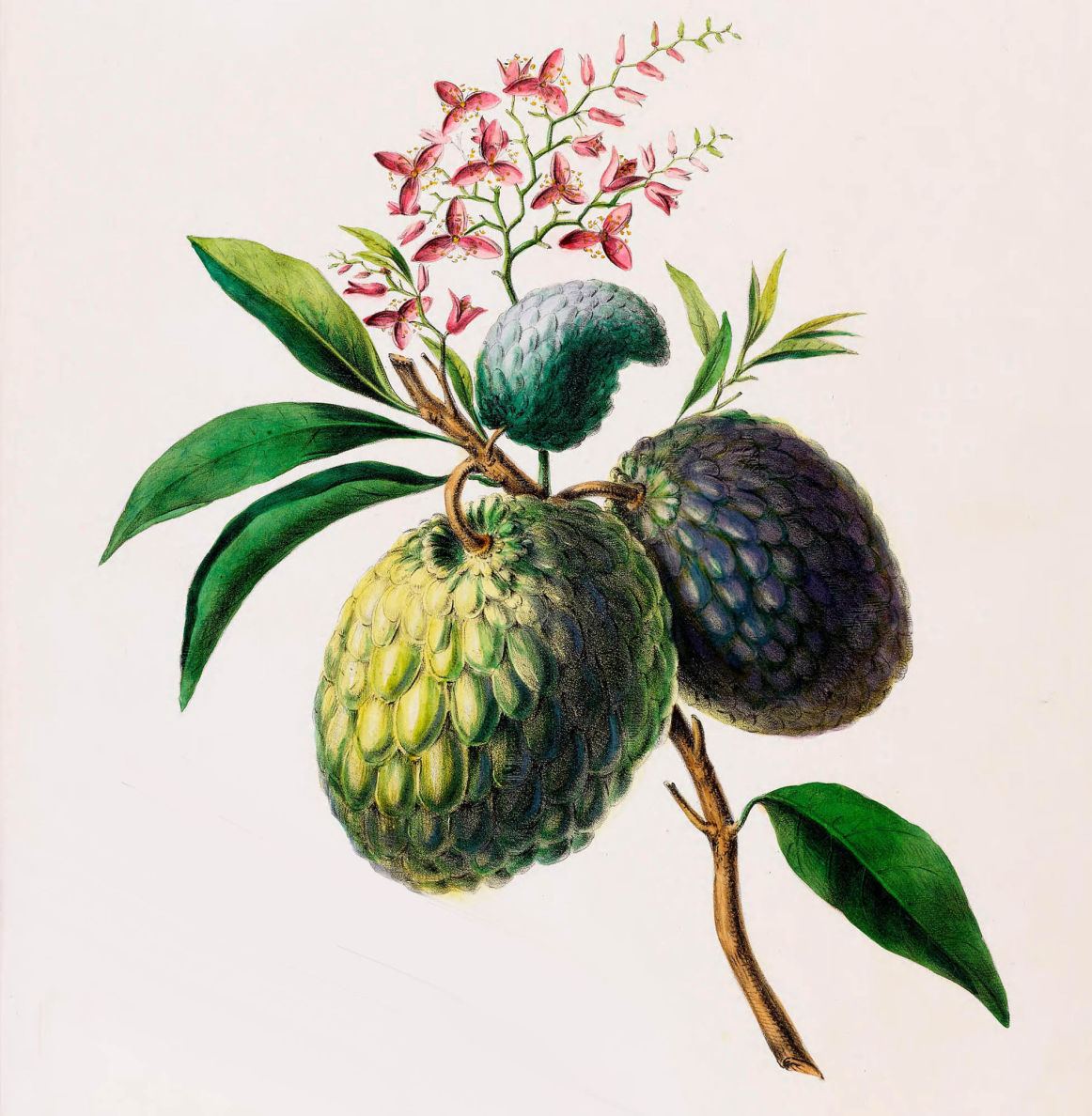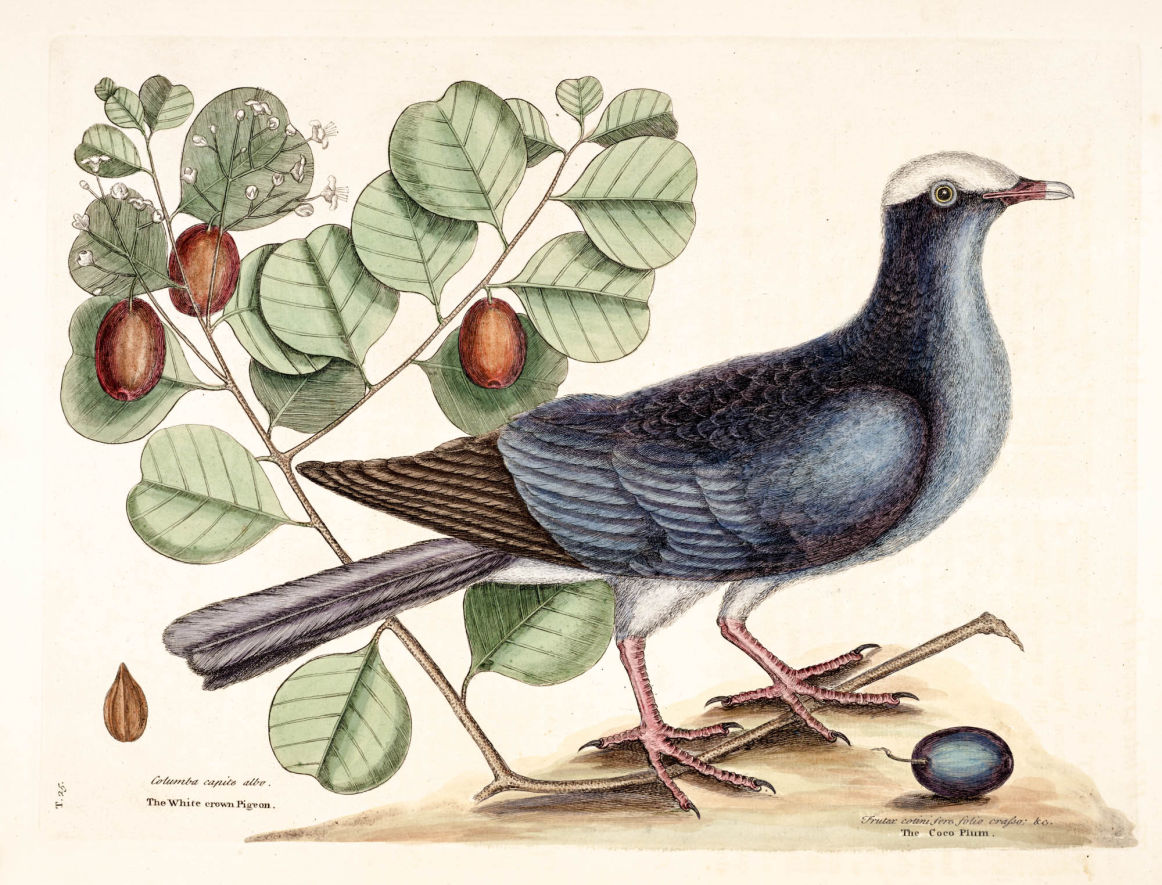
Original flavors of St. Martin
The first foods on St. Martin were here long before the first people. Many different native fruits were already part of the landscape when the first people came. Before the first people, these fruits were food for native birds and other animals. We can thank the birds for eating these fruits and then spreading the seeds from island to island.
Sea Grape (Coccoloba uvifera) and Coco Plum (Chrysobalanus icaco) are often found near the sea, and still grow wild near many of our beaches. Guava (Psidium guajava) and Guavaberry (Myrciaria floribunda) do well in valleys with rich soil and plenty of water. Soursop (Annona muricata) and Sugar Apple (Annona squamosa) were once planted in every backyard.


Soursop (Annona muricata) gets its name from the sweet and sour taste of its fruit. The fruit is loved throughout the Caribbean and has also been brought to Asia and Africa. On St. Martin, the fruit and its juice are both popular. Soursop is also used as bush medicine. The fruit and leaves are used to treat dozens of conditions, from fever to bedwetting. On St. Martin, tea made from a few Soursop leaves steeped in boiled water is taken before bed for better sleep.
The Sugar Apple (Annona squamosa) is also called Sweet Sop.


The Coco Plum (Chrysobalanus icaco) is seen here with the White-crowned Pigeon (Patagioenas leucocephala), a Caribbean bird that eats the fruit and spreads the seeds of many native trees.
Today, some native fruits, like the Water Lemon (Passiflora laurifolia), are rarely seen. Sea Grapes are still loved for their shade and beauty, but now most of their fruit goes uneaten. Over the years, many new, non-native fruits like mango, banana and kinnip became local favorites after they were brought to St. Martin from other parts of the world.
The Water Lemon (Passiflora laurifolia) is a close relative of the Passion Fruit (Passiflora edulis). Both plants are vines with beautiful flowers. The fruit of the Water Lemon is oval-shaped, and soft and fuzzy on the outside. Inside, the fruit looks like a Passion Fruit, with edible seeds in sweet, juicy pulp. Though delicious, they are not widely grown. Leaves of the Water Lemon are eaten by caterpillars of the Gulf Fritillary (Agraulis vanillae), a medium-sized, bright orange butterfly.

Other native fruits still have a strong place in local diet and culture. Guavaberry is a favorite flavor for rum, jam and tarts eaten at Christmas time. Soursop trees are still found beside many houses. Their fruit are enjoyed as juice, smoothies or sorbet and their leaves are used as a bush tea.